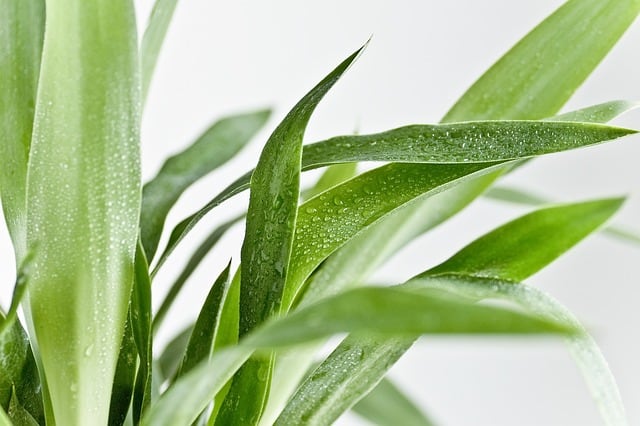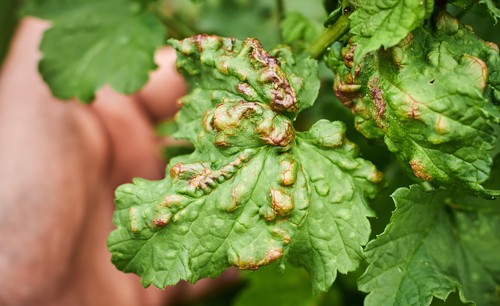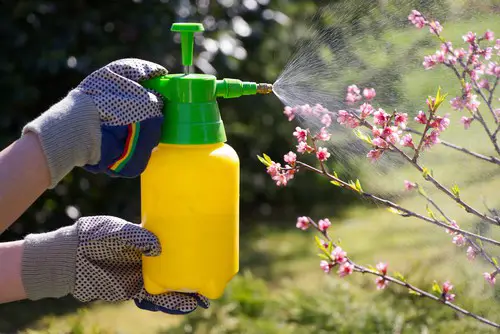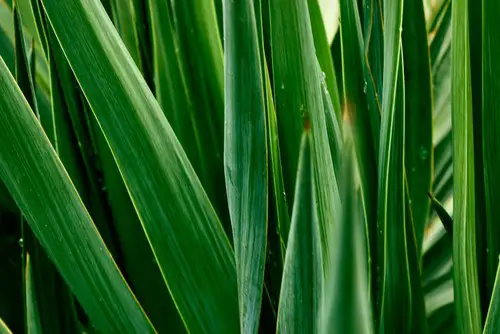Yucca plants are known for their sword-shaped leaves and towering presence, making them a popular choice for gardens and landscapes. However, black spots on yucca leaves can be a cause for concern and may indicate a problem with the plant’s health.
In this article, we will explore the common causes of black spots on yucca leaves, how to identify symptoms, and prevention and treatment strategies.
Understanding black spots on yucca leaves is crucial in maintaining the plant’s health. While black spots may be a cosmetic issue, they can also indicate a more serious problem, such as a fungal or bacterial infection.
Overwatering, poor drainage, and pests can all contribute to the development of black spots on yucca leaves. Identifying the underlying cause of the problem is essential in determining the appropriate treatment method.
Common causes of black spots on yucca leaves include fungal and bacterial infections, pests, and overwatering. Symptoms of black spots may include dark, circular lesions on the leaves, yellowing or browning of the leaves, and wilting.
Prevention strategies include proper watering, good drainage, and regular inspection for pests. Treatment methods may include the use of horticultural soap, neem oil, or fungicides. Recovery and aftercare involve monitoring the plant’s health and taking steps to prevent the problem from recurring.
Key Takeaways
- Black spots on yucca leaves can indicate a problem with the plant’s health, such as a fungal or bacterial infection, pests, or overwatering.
- Identifying the underlying cause of the problem is essential in determining the appropriate treatment method, which may include the use of horticultural soap, neem oil, or fungicides.
- Prevention strategies include proper watering, good drainage, and regular inspection for pests, while recovery and aftercare involve monitoring the plant’s health and taking steps to prevent the problem from recurring.
Other popular posts:
Understanding Black Spots on Yucca Leaves

Yucca plants are known for their striking appearance and resilience. However, they are not immune to diseases. One of the most common problems that yucca plants face is the appearance of black spots on their leaves. These spots can be caused by various factors, including bacteria, fungus, and pests.
Bacterial leaf spot or blight is a common disease that causes dark lesions on the foliage. This disease can be spread through soil, water, and even pruning tools. Overwatering and poor drainage can also create a favorable environment for the growth of bacteria.
Fungal infections can also cause black spots on yucca leaves. Fungal spores can spread through the air and infect the leaves of the plant. Overwatering and high humidity can create a conducive environment for fungal growth.
Apart from bacteria and fungus, pests can also cause black spots on yucca leaves. Weevils are the most common pests that infect yuccas. These insects lay eggs on the leaves of the plant, which can cause black spots to appear.
It is essential to identify the cause of black spots on yucca leaves to determine the appropriate treatment. If the spots are caused by bacteria or fungus, it is best to remove the affected leaves and treat the plant with a fungicide or bactericide. If the problem is caused by pests, it is best to use an insecticide to control the infestation.
Preventing black spots on yucca leaves is also crucial. Proper watering and drainage can help prevent the growth of bacteria and fungus. Regular inspection of the plant can also help detect and control pest infestations before they cause significant damage.
Overall, understanding the causes and prevention of black spots on yucca leaves is essential for maintaining a healthy and beautiful yucca plant.
Black Spots on Yucca Leaves – 3 Common Problems
Yucca plants are generally hardy and low-maintenance, but they can still fall prey to various problems that can cause black spots on their leaves. These spots can be caused by fungal infections, bacterial infections, or pest infestations. Here are some of the most common causes of black spots on yucca leaves:
1. Fungal Infections

Fungal infections are one of the most common causes of black spots on yucca leaves. Fungi can attack the leaves of yucca plants, causing black spots and other discolorations.
Some of the most common fungi that can cause black spots on yucca leaves include Alternaria, Cercospora, and Phoma. These fungi thrive in warm, humid conditions and can spread quickly if left untreated.
To prevent fungal infections, it’s important to keep the leaves of your yucca plant dry. Avoid overwatering your plant and make sure it has good drainage. If you notice black spots on your yucca leaves, you can try applying a fungicide to the affected areas. Be sure to follow the instructions on the label carefully.
2. Bacterial Infections
Bacterial infections can also cause black spots on yucca leaves. These infections are usually caused by overwatering or poor drainage, which can create a favorable environment for bacteria to grow. Some of the most common bacteria that can cause black spots on yucca leaves include Pseudomonas and Xanthomonas.
To prevent bacterial infections, it’s important to avoid overwatering your yucca plant and make sure it has good drainage. If you notice black spots on your yucca leaves, you can try applying a bactericide to the affected areas. Be sure to follow the instructions on the label carefully.
3. Pest Infestations
Pest infestations can also cause black spots on yucca leaves. Some of the most common pests that can attack yucca plants include aphids, scale, yucca plant bugs, and mealybugs. These pests can feed on the leaves of your yucca plant, causing black spots and other damage.
To prevent pest infestations, it’s important to keep your yucca plant healthy and well-maintained. You can also try applying an insecticide to the affected areas. Be sure to follow the instructions on the label carefully and use the appropriate protective gear.
Identifying Symptoms
Yucca plants are known for their sword-like leaves and white flowers. However, when black or brown spots appear on the leaves, it is a sign that something is wrong. Identifying the symptoms can help diagnose the problem and prevent further damage to the plant.
1. Infected Leaves

One of the most common symptoms of a yucca plant with black spots is infected leaves. The spots may start small and gradually get larger over time. Infected leaves may also turn yellow or brown and fall off the plant.
2. Symptoms
The symptoms of black spots on yucca leaves can vary depending on the cause. In some cases, the spots may be accompanied by yellowing or browning of the leaves. In other cases, the spots may be the only symptom.
3. Black Spots on Yucca
Black spots on yucca leaves can be caused by a number of factors, including fungal infections, bacterial infections, and insect infestations. Identifying the cause of the black spots is important in order to treat the problem effectively.
4 Brown Spots
In addition to black spots, brown spots may also appear on yucca leaves. Brown spots can be caused by a variety of factors, including overwatering, underwatering, and nutrient deficiencies.
5. Purple
Purple spots may also appear on yucca leaves. Purple spots can be a sign of a fungal or bacterial infection. In some cases, purple spots may also be a sign of nutrient deficiencies.
Overall, identifying the symptoms of black spots on yucca leaves is the first step in treating the problem. By identifying the cause of the black spots, gardeners can take the appropriate steps to prevent further damage to the plant and ensure its continued health.
Prevention Strategies
Yucca plants are generally easy to care for, but they can develop black spots on their leaves for several reasons. Fortunately, there are several prevention strategies that can help keep your yucca plant healthy and free from black spots.
1. Proper Watering

Overwatering is one of the most common causes of black spots on yucca leaves. It is important to ensure that the soil is completely dry before watering the plant again. A good rule of thumb is to water the plant deeply once a week during the growing season and reduce watering during the winter months.
2. Adequate Sunlight
Yucca plants need direct sunlight to thrive. Ensure that your yucca plant is placed in a location that receives adequate sunlight. If the plant is not getting enough sunlight, it may become weak and more susceptible to diseases.
3. Good Soil and Drainage
Yucca plants prefer well-draining soil that is slightly acidic. Avoid using heavy potting soil that retains too much water, as it can lead to root rot and black spots on the leaves. Instead, use a well-draining potting mix that is specifically formulated for cacti and succulents.
4. Regular Fertilization
Yucca plants do not require frequent fertilization, but they can benefit from occasional feeding during the growing season. Use a balanced fertilizer that is specifically formulated for cacti and succulents, and follow the instructions on the package carefully.
By following these prevention strategies, you can help keep your yucca plant healthy and free from black spots. Remember to monitor your plant regularly for signs of disease, and take action promptly if you notice any issues.
Treatment Methods
Yucca plants with black spots can be treated using a variety of methods. The most effective treatment method depends on the underlying cause of the black spots. The following sub-sections detail some of the most commonly used treatment methods.
1. Using Fungicides

If the black spots on the yucca leaves are caused by a fungal infection, using fungicides can be an effective treatment method. Copper fungicide is a popular choice for controlling fungal infections on yucca plants.
Bonide Liquid Copper Fungicide, for example, can be applied at a rate of 0.5 to 2 fl oz/gal during new leaf growth in the spring.
2. Employing Pest Control
If the black spots are caused by pests such as scale bugs, mealybugs, or spider mites, employing pest control measures can help. Horticultural soap, neem oil, and rubbing alcohol are some of the most commonly used pest control agents. These agents can be applied directly to the affected leaves using a spray bottle.
3. Pruning and Destroying Infected Leaves
If the black spots on the yucca leaves are caused by a bacterial or viral infection, pruning and destroying the infected leaves can help prevent the spread of the infection. It is important to use clean, sharp pruning shears to prevent the spread of the infection. The infected leaves should be placed in a plastic bag and disposed of in the trash.
In addition to the above treatment methods, it is important to maintain good soil management practices and avoid overwatering the yucca plant. Overwatering can lead to root rot, which can cause black spots on the leaves. If the soil is infected, it may be necessary to remove and replace it with fresh, healthy soil.
Overall, treating black spots on yucca plants requires a combination of different treatment methods. By identifying the underlying cause of the black spots and using the appropriate treatment method, yucca plants can be restored to their healthy state.
Recovery and Aftercare

Once the black spots have been treated on the yucca plant, it is important to focus on recovery and aftercare to ensure the plant remains healthy.
One of the most important things to keep in mind is to avoid overhead watering. This can lead to moisture on the leaves, which can encourage fungal growth and the return of black spots. Instead, water the yucca plant at the base and avoid getting water on the leaves.
It is also important to provide good air circulation around the plant. This can help prevent the growth of fungus and other diseases. If the yucca plant is indoors, consider placing it near an open window or using a fan to keep the air moving.
If the yucca plant was suffering from root rot, it is important to ensure the soil is well-draining and not kept too moist. Consider repotting the plant with fresh soil and a pot with drainage holes to prevent the roots from becoming waterlogged again.
After treating the black spots, it may be necessary to cut off any damaged or dead foliage. This can help the plant focus its energy on new growth and recovery. Be sure to use clean, sharp tools and make clean cuts to avoid damaging the plant further.
Finally, it is important to be sensitive to the needs of yucca plants. They are hardy plants, but they can be sensitive to changes in their environment.
Be sure to provide the right amount of sunlight, water, and nutrients, and monitor the plant for signs of stress or disease. With proper care and attention, yuccas can recover from black spots and thrive once again.
Frequently Asked Questions
What causes black spots to appear on yucca leaves?
Black spots on yucca leaves can be caused by various factors, including bacterial or fungal infections, pest infestations, and poor soil conditions. Bacterial leaf spot or blight is a common cause of dark lesions on yucca foliage.
Potted plants are easier to manage than those in the ground. Pests like spider mites, mealybugs, and scale insects can also cause black spots on yucca leaves.
How do I treat black spots on my yucca plant?
The treatment for black spots on yucca leaves depends on the underlying cause. If the spots are caused by bacterial or fungal infections, the affected leaves should be removed and destroyed to prevent the spread of the disease.
Applying a fungicide can also help control the spread of the disease. If the spots are caused by pests, using an insecticidal soap or neem oil can help get rid of the pests.
What is the best fungicide to use for yucca plants?
The best fungicide to use for yucca plants depends on the specific fungal infection. Copper-based fungicides are effective against many fungal diseases, including leaf spot and blight.
Other fungicides like chlorothalonil and mancozeb are also effective against fungal diseases. It is important to follow the instructions on the fungicide label carefully.
Can yucca fungus be treated with home remedies?
There are several home remedies that can be used to treat yucca fungus, including using a mixture of baking soda and water, or a mixture of milk and water. However, the effectiveness of these remedies is not scientifically proven, and it is always best to use a proven fungicide.
Why do yucca plants get brown spots on their leaves?
Yucca plants can get brown spots on their leaves due to various reasons, including fungal or bacterial infections, pest infestations, overwatering, or poor soil conditions. Brown spots on yucca leaves can also be a sign of sunburn or physical damage to the plant.
How can I prevent black spots from forming on my yucca plant?
Preventing black spots on yucca plants involves maintaining good plant health and preventing the conditions that can lead to fungal or bacterial infections.
This includes providing the plant with well-draining soil, avoiding overwatering, and ensuring adequate airflow around the plant. Regularly inspecting the plant for signs of pests and promptly treating any infestations can also help prevent black spots from forming.

Hey, I’m Lisa and I’ve been an avid gardener for over 30 years. I love writing, talking and living in the garden! Feel free to connect with me on my socials below

